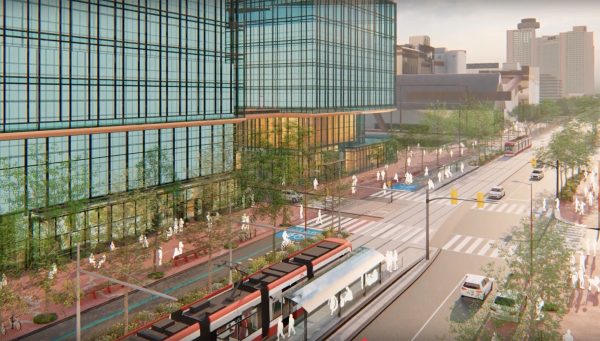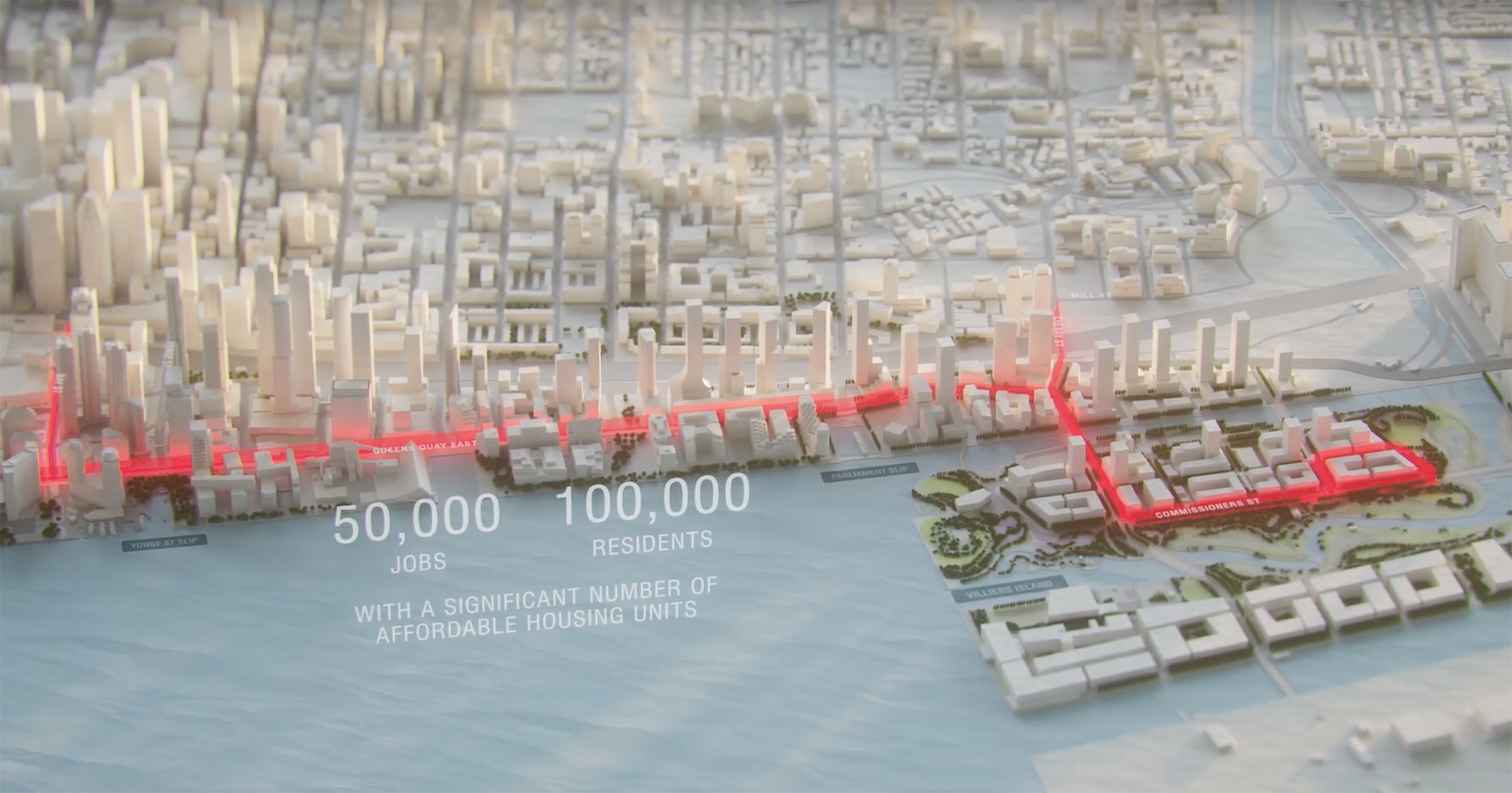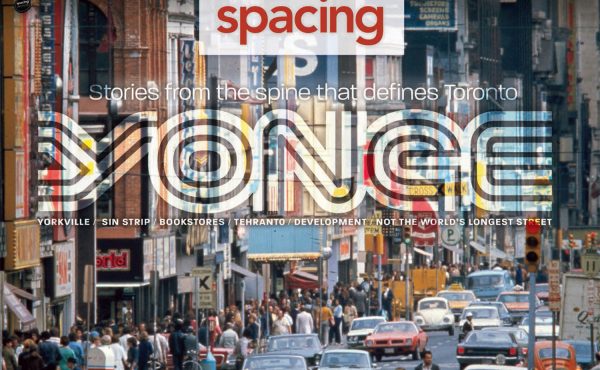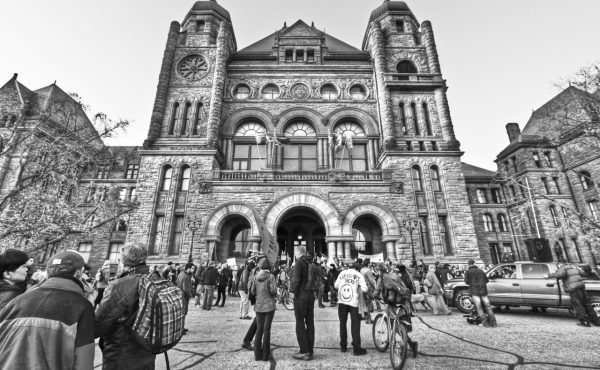Because civilization is rapidly collapsing and we all need something positive to cling to, the Ontario election campaign moved rapidly into the endorphin-rich `spending mega-promises’ phase, many of which involve huge transit pledges.
Doug Ford launched his run by teeing up a $22 billion infrastructure trough, which may include transit dollars but is mostly aimed at highways. Then, he and Bonnie Crombie’s Liberals both committed to pick up the multi-billion capital tab for subsequent phases of Ottawa’s star-crossed LRT network. Crombie began her campaign with a promise to install automatic doors on all subway platforms, a suicide/accident prevention measure that her team has yet to cost.
And not to be outdone, Marit Stiles earlier this week said an NDP government would resurrect the Bill Davis era 50-50 cost-sharing formula for transit, a reference to a policy, dismantled by former premier Mike Harris in 1996, that splits the operating deficit for transit agencies between municipal governments and Queen’s Park.
What’s missing from this picture?
As I’ve complained in this space on several occasions (here, here and here), the answer is capital funding for the $2.6 billion Queen’s Quay East LRT to the Portlands, a transit project that is blindingly obvious in its raison d’etre and yet remains an orphan for reasons that surpass understanding.
Yes, the city has been dropping quarters into a reserve fund jar marked Waterfront East LRT for years, and recently published a highly technical report documenting the progress it has made in terms of planning and design, drawing on a $135 million bucket of (city) cash. But there’s no capital funding for this project — a void that becomes all the more glaring when one considers how so many upper orders of government have tripped over themselves to lavish billions on transit schemes that were far less advanced from an engineering point of view.
This perplexing blind spot becomes that much more glaring when you consider the latest news out of Waterfront Toronto, which recently unveiled a $975 million three-way contribution (feds/province/city) to construct the infrastructure needed to finally allow the development of Villier’s Island/Cousins Quay, renamed Ookwemin Minising, now that the reconstruction of the lower Don is complete.
In Spacing this week, deputy mayor and Spadina-Fort York councillor Ausma Malik lauded, correctly, the fact that three orders of government that don’t normally play so well together managed to find consensus on this venture. That $950 million, she said, would create thousands of construction jobs and thousands of new homes, including affordable ones.
Shovels will be in the ground starting next year, she said.
All good. Except this: how will all those new residents travel between this somewhat isolated portland precinct and the rest of the city?
Buses! We’ll give them buses! Or maybe even express buses!
Because, well, there’s zero chance the LRT will be ready before the first inhabitants move in, and the way things are going, the LRT may not be done before the last condo is built.
The upshot is that those buyers/investors who don’t much care for buses may be looking for condos with parking. This is the entirely predictable nightmare scenario — that we’ll be constructing a new downtown neighbourhood perversely over-resourced with carbon-intensive parking because we couldn’t get our act together to build a rapid transit line that’s been on the books for years.
All the usual cautions are worth repeating: The cost of the line will only get more expensive over time. Opposition to the construction is lower right now than it will ever be because, well, no residents to bark about inconveniences. Last: the best time to think about preventing or abating emissions is before people get into the habit of driving.
It’s also true that there are literally no other rapid transit lines with a better shot at succeeding — in terms of attracting riders as well as ROI — than the Waterfront East LRT. It is set to run in a corridor that will be dense, with modest walking times to stops, and an easy connection to a major multi-modal transit hub.
I’ve occasionally heard talk that a potential work-around involving the connection of a portlands streetcar loop to Cherry Street, which is the current terminus of a King Street East detour south into the Distillery District. But this is a half-measure, at best, with a route that must be threaded through successive bottlenecks. As for riders, that corridor (north from the portlands, up Cherry and then into the maw of King Street) will be far more time-consuming and therefore inconvenient than a more direct Queen’s Quay East link to Union Station — one, incidentally, that passes numerous office buildings, more condos and a pair of community college facilities.
I’d be remiss in not pointing out that all the new Waterfront Toronto money effectively subsidizes the private development destined for the portlands. The $975 million will pay for municipal infrastructure. But for most green- or brownfield projects, such capital costs, including roads, are normally borne by the builder via development charges and other levies. What’s clear with Ookwemin is that the three orders — likely with some discrete encouragement from the region’s development industry — realized they’ll need to prime the pump, especially these days.
And so, while Malik and the folks at Waterfront Toronto have legitimate reason to celebrate this new funding, which can absolutely be characterized as a city-building investment, we’re still very much stuck with the paradox of trying to build a dense, water’s edge, transit-friendly neighbourhood, but without the transit.
So what say you, Doug, Bonnie and Marit? As transit pledges go, it won’t ever get more logical.







One comment
Not enough potential voters live there now.